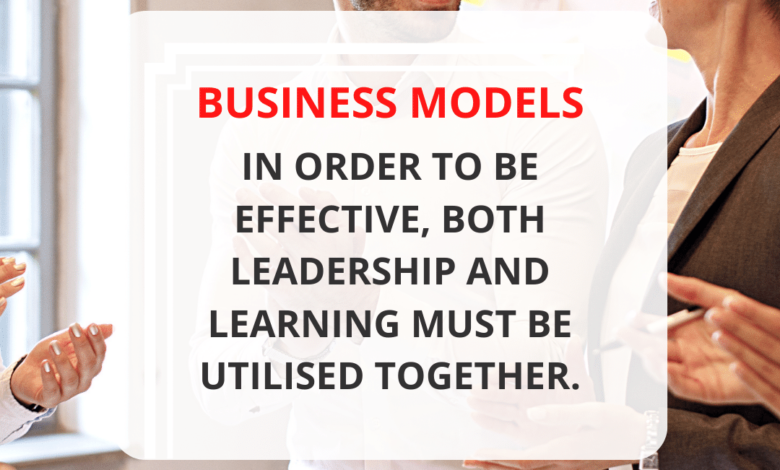Examples of Business Models and the Organizations That Used Them

Business Models are used by organizations to solve their business problems. There are different types of models, and identifying the correct model for your organization is important. These models are based on your customer’s needs and goals. They help you find the best way to meet those goals.
How They Work
Business Models are the basic structures that define a company. They describe the way the company creates value and organizes its internal operations. They often interact in complex ways and determine a company’s success or failure. Some business models are more innovative than others and leverage new technologies. For example, Airbnb created a new business model that allows home owners to rent their properties to guests and take a percentage of the rent.
A business model must also be flexible and dynamic, as it must change with the market and technologies. The problem is that most organizations have strong inertia when it comes to changing their business models. Despite the importance of the business model, it’s important to understand that the concept of a business model is socially constructed and is conceptualized to represent a representation of reality.
A business model reflects the logic of a business and lays out the structure of revenues, costs, and profits. While a financial model may be based on statistics, a business model is a conceptual model. It has also been used in systems dynamics to model feedback cycles in business. However, this field contributes little to the discussion of business models because it doesn’t have a standardized communicative syntax.
Components Of A Business Model
A business model defines the primary strategy of an organization to turn a profit and create value. Typically, it is based on the products or services the organization sells, its expected expenses, and the types of customers it targets. However, organizations often need to change their business models for a variety of reasons. A business model can help a company make important decisions about its management style, employees, and other aspects of its operations.
Besides defining the revenue stream, a business model also identifies the challenges faced by customers. For example, if the business produces lawnmowers, it is important to outline how customers can return a defective product. Also, the cost structure must be compatible with the revenue earned. A business model can help a company attract investors and position itself for long-term success.
There are two types of business models: product-based and service-based. Product-based business models require the creation of a physical product, whereas service-based businesses require services or a combination of both.
Value proposition
Value proposition is a key component of a business model. It defines the specific products and services that a company offers its customers in return for a price. A successful value proposition is tailored to the needs and problems of the target customer segment. The value proposition is important both for the success of the business model and for its customers.
New value propositions are created to address new customer needs. These new value propositions often have technology-related characteristics. For example, the invention of the cell phone created a whole new industry centered on mobile telecommunication. Another popular approach to creating value is by improving product performance. A good example of this is the PC sector. As performance grew, companies made faster PCs, but this failed to lead to an equivalent increase in customer demand.
Another way to develop a compelling value proposition is to analyze the competitors’ value proposition. Every industry has its share of negative stereotypes. These stereotypes may hurt a business before it even gets off the ground. For example, a consumer may react negatively to pushy used car salesmen or a delivery service. A successful value proposition goes against these stereotypes. Indeed, many businesses have been formed precisely to go against these expectations.
Key resources
Business models are a critical tool for any business. They define a company’s products or services, as well as how it will market and sell them. Many models exist already and others are still being developed. Creating and implementing a new model can be a difficult process.
Some examples of business models include user-generated content and the subscription model. These are digital products that are available via social networks and sold to businesses seeking to promote brands. Examples include YouTube, Quora, Yelp, and Yahoo Answers. In addition, marketplaces allow individuals to list items, and they often act as a middleman between buyers and sellers. These services also provide additional tools and services to ensure that transactions are fair and secure. For example, eBay and Craigslist both follow the marketplace model.
Another common business model is the bricks-and-mortar retail model. This model combines a physical location with an online presence. For example, a company selling clothes may offer free delivery of a basic product, but will charge for extra services.
Key activities
A business model is a blueprint for a new business that defines how the organization will generate revenue and value. It helps an organization determine its market and target customers, as well as its costs and expenses. A good model is the foundation of a successful business, and can make or break a new company.
The Pay-As-You-Go model is one example of a business model where products and services are sold on a subscription basis. This type of business model makes it convenient for consumers to pay only for the services or products they actually use. Another example of a business using this model is Amazon. Amazon sells Kindle ebooks for much less than the cost of a traditional paperback book.
The subscription business model allows companies to maintain long-term customer relationships and generate recurring revenue from their customers. Some organizations use this model, such as Dollar Shave Club. Another model uses the aggregator model, where a company aggregates different services and products and sells them to retailers for a commission.
Channel
Channels are defined as the ways in which an organization communicates and delivers value to customers. These channels may be in the form of a store, a website, or both. They enable the business to sell a product or service directly to the customer. This type of channel often has higher profit margins because of the direct relationship the business has with its customer. However, it also requires more investment and a longer production-to-market cycle. Another drawback of the direct channel is the lack of long-standing relationships with customers.
Ultimately, the choice of a channel depends on the organization’s resources and the needs of its customers. While some channel models require a large investment, others are inexpensive and require only a small amount of time. Websites and youtube channels are examples of low-cost channels. Online distribution requires knowledge of search engine optimization and may require a small amount of initial capital.
Another example of a channel business model is the “bundle” business model, which combines different products and services into one convenient package. This approach, which can be used by businesses seeking suppliers, makes it easy for customers to make purchases and manage orders. The bundle business model eliminates the middleman and enables the business to deal directly with the customers.
Customer relationship
The Customer relationship business model combines sophisticated self-service processes with personalized interactions to create a unique customer experience. With the use of a personalized online profile, customers can receive tailored information and services. In addition, automated services can identify individual customers and make recommendations based on their preferences.
There are three primary customer relationship business models. The first is customer acquisition, the second is customer retention, and the third is upselling. Regardless of your business model, maintaining high-quality interactions with customers is essential to your success. To do this, you need to be vigilant in managing customer information, and strike the right balance between offering information and maintaining a relationship with customers.
A highly satisfied customer will be a powerful advocate for your organization. Conversely, a dissatisfied customer is a potential saboteur. Even if they do not buy, dissatisfied customers can be an effective way to undermine your reputation. They may actively ‘engage’ against your organisation, so you need to try to salvage the relationship and keep the customer as happy as possible.
Customer segment
Customer segmentation is a common strategy that organizations have used to win over customers and increase their bottom line. It involves identifying the top customers and targeting them with better products. Typically, a customer segment comprises at least 25% of a company’s total customer base, but this number can vary. In order to ensure a successful customer segmentation, companies should consider the following strategies.
The first step in developing a customer segment strategy is to define each customer segment. These segments can be based on many criteria, including age, gender, geographic location, and purchasing habits. The next step in customer segmentation is to determine the value of each segment. In addition, organizations should determine whether each segment has sufficient market reach and spending power. By doing so, they can maximize the value of the customers they have.
Another important step in customer segmentation is to interview employees in the company. It is important to interview employees from different departments, including product development, marketing, and sales. The employees from these departments should have ideas about what their target customers want from a product. In some cases, they may have different ideas, so be sure to ask follow-up questions to clarify the topic.
also read:The Elon Musk Twitter Deal Timeline



